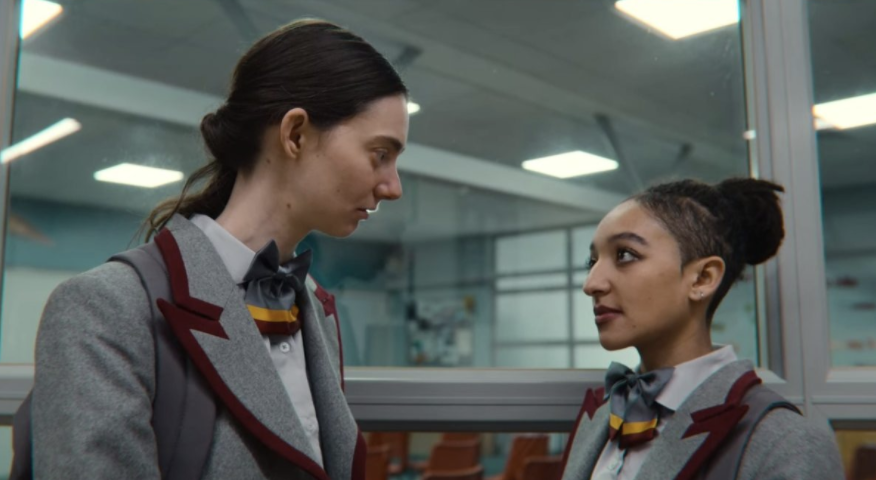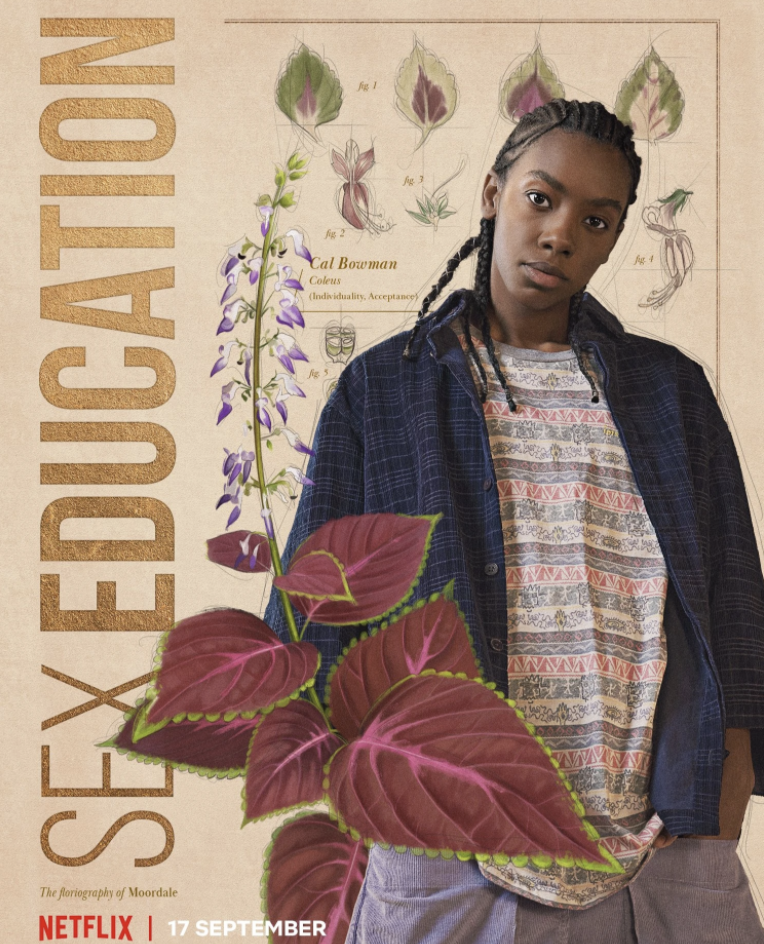Welcome back to Moordale Secondary! Back by popular demand, Sex Education Season three has received mixed reviews from both fans and critics alike. Here at UT, fans are split. One group of fans believe that the show has continued to push the boundaries of representation and have succeeded in accurately representing the experiences of the LGBTQ+ community, while the others find themselves disappointed in the show writers and their inability to break away from the mold that dictates LGBTQ+ character arcs and interactions in media. So, the question is: does this season of Sex Education accurately represent the LGBTQ+ community or just follow the conventional arcs for the sake of representation?
This season picks up after the summer of the last season and it’s safe to say a lot of things have changed—Maeve and Otis are no longer friends, Jean is pregnant, Headmaster Griff is no longer Headmaster and Ruby and Otis are now dating? This season introduces a whole host of new characters as well. Hope, playing the cool-teacher-gone-wrong, acts as the villain of the series, but the biggest win in terms of diversity is the introduction of Cal, a new non-binary student. The season takes a dramatic shift from the prior ones as it focuses more on the character arcs of its LGBTQ+ characters, the fan-favorite being Adam Groff.

Adam begins the season in a relationship with the love of his life and ends it single and enrolled in a dog competition. If that didn’t catch you by surprise, nothing will. Adam and Eric are by far the most beloved couple on the show. Their banter is iconic and they complement each other so well. In fact, their chemistry is so strong that it made Eric leave his boyfriend, Rahim, in season two. But this season, despite having overcome a grocery list of obstacles, they break up. I may not be completely unbiased, but I’m not alone when I say this break-up hit deep. Not only did it seem uncharacteristic, but Eric was the one who initiated it after he cheated on Adam. He believed Adam wasn’t in touch with his sexuality enough to fully be in their relationship and to this I say: Are you kidding me? Adam Groff has had the most character growth in the show. He went from the high school bully to a kind and sensitive person who genuinely wanted to improve himself academically, find what he’s passionate about and be there for Eric as a partner. Eric, on the other hand, was undoubtedly the second worst character this season, which is disappointing given how great he was in the previous seasons.

Not only has Eric now cheated on all the boyfriends he’s had, but he’s also done so under the belief that he’s right. This character flaw, unfortunately, perpetuates more than one harmful belief about gay relationships. Eric’s impulsivity when it comes to his relationships is so out-of-character that it paints a picture of gay relationships being inherently temporary and fragile. The writers proceed to almost erase Eric and Otis’ comradery which was what made Eric so lovable in the first place. Their friendship was an excellent representation of male platonic relationships that didn’t shy away from physicality and it was deeply missed this season.
The other prominent LGBTQ+ relationship on the show is the one between Ola and Lily.

Luckily, the writers were able to avoid the stereotypes surrounding LGBTQ+ couples in this relationship. Ola and Lily are both dealing with their own crises this season, with Lily coming to terms with her inability to fit in and Ola severely missing her mother. Their relationship works because they see each other for who they are and overcome issues through communication. Lily and Ola beautifully demonstrate how even though relationships take work, they are more than worth it.

Finally, Cal Bowman marks progress as the first non-binary character on the show. They make an impact by fighting against Hope’s insane rules and standing up for themselves despite being constantly berated for no reason other than their gender. Cal’s struggles not only are representative of some aspects of a non-binary person’s experience but they also evoke empathy in those unfamiliar with non-binary people. Many fans remarked that Cal’s struggles and arc helped them educate themselves and understand gender is a spectrum. Cal’s relationship with Jackson was crucial as it demonstrated how despite one’s best intentions and feelings, sexual orientation and gender are complex identities and not unidimensional.
Overall, Sex Education is a show that is able to capture the complexities of characters’ personalities along with their identities. While it does have some flaws the show still manages to include diverse perspectives without making them look forced which in turn exposes audiences to new perspectives. Season 3 furthers the show’s narrative, introduces us to a whole host of new characters, covers complex topics of gender and sexual identity, all while keeping its audience entertained and that is a success indeed.
Featured Image Courtesy of Netflix Sex Education Promo Posters
































